Blackfriars (Road) Bridge

Blackfriars Bridge, EC4, a Grade II listed road bridge for pedestrians and vehicles crossing the Thames from Blackfriars on the north to Southwark on the South Bank. Designed by Sir William Cubitt's son Joseph (1811-1872), whose most notable work was for the Great Northern Railway. Cubitt's colleague was a "Mr. H. Carr, M. Inst. C.E." but despite Cubitt's request, Carr's name was not given in the records ("Obituary"). The five-arched bridge was built from 1864-69, using both cast iron and wrought-iron, granite, brickwork, and Portland stone. [Click on this and the following images for larger pictures.]
The bridge has a number of ornamental touches, as required by the committee in charge. In particular, the piers have elaborately carved capitals, with birds and a floral design by John Birnie Philip, and there are floral studs on the ironwork of the arches and criss-crossing "trellis" over them, with a foliate pattern on the cornice above. Another ornamental touch is the Gothic style of the balustrade along the top (see listing text). Less happily, at the design stage there was a "Battle of the Bridge," over whether it should have three or five arches: according to Cubitt's obituarist, this is what resulted in "cross traffic" at the north end and the "awkward shoulder" on the south end.
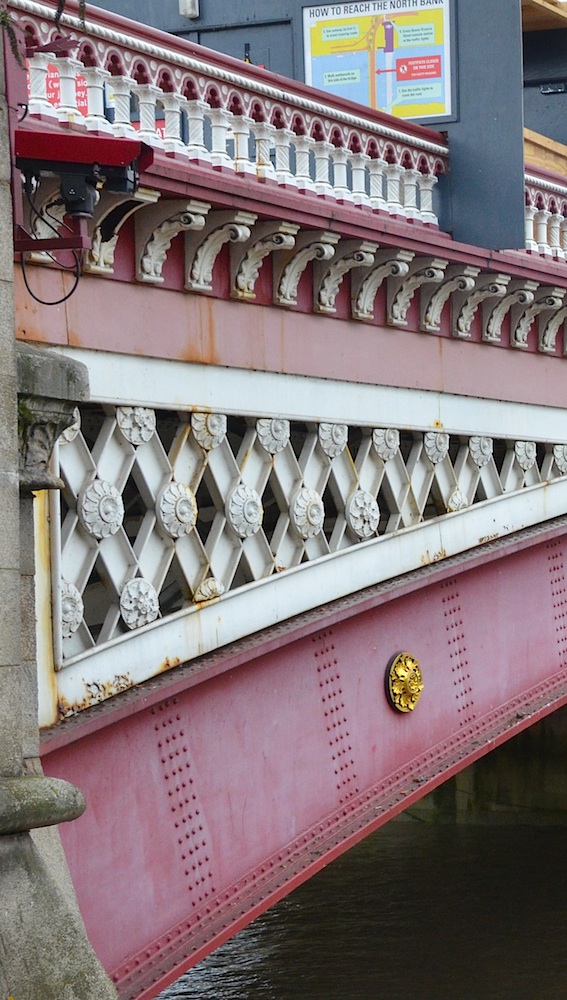
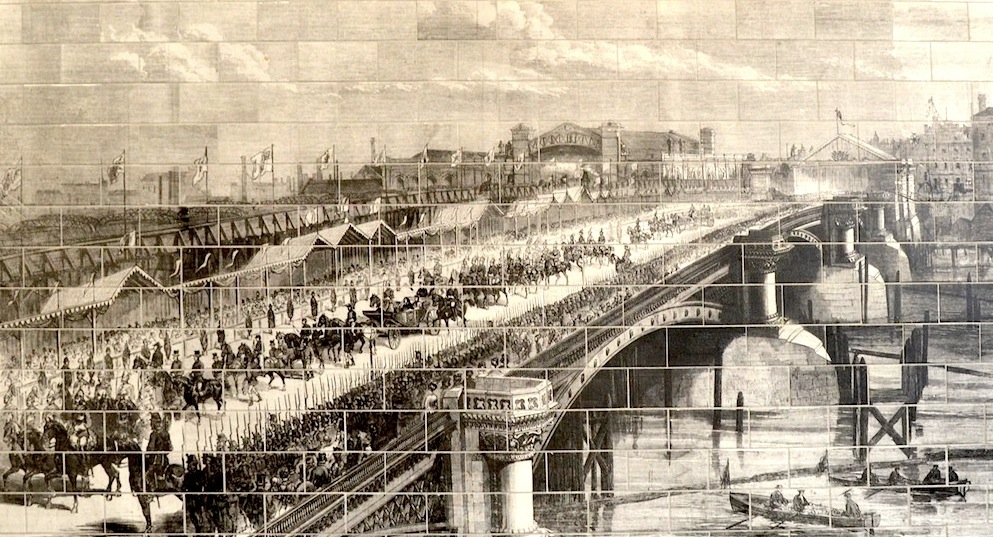
Left: Detail showing decorative elements of the bridge. Right: The opening of the bridge as illustrated in the Illustrated London News of 13 November 1869, and shown on the tiling of the pedestrian underpass on the South Bank.
Nevertheless, after much wrangling the bridge was successfully completed and opened by the Queen on the way to opening the Holborn Viaduct, on 6 November 1869. Unfortunately for Cubitt, perhaps, this last major work of his was upstaged by the next item on the royal agenda that day. The Times report did describe the bridge as "another grand avenue of approach from south to north, equal, if not superior, to existing communications across the Thames at Westminster and London-bridge," but added, with some enthusiasm, "London has many bridges but only one Viaduct." Cubitt, described in his obituary as a self-effacing man, might not have minded that his achievement was somewhat overshadowed.
The Earlier Road Bridge
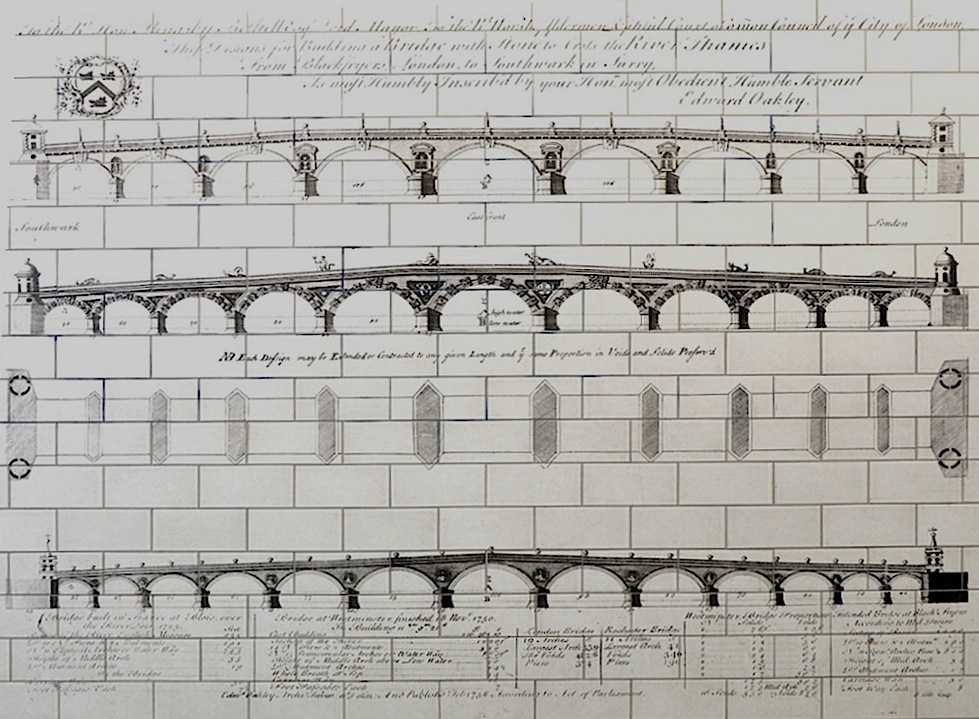
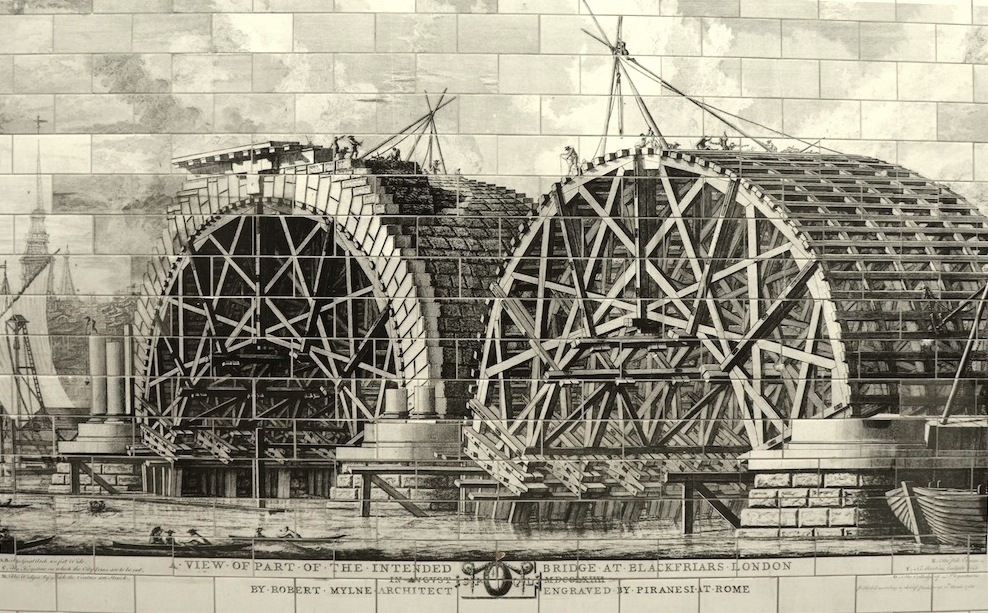
Glimpses into the history of the bridge shown on the underpass tiling. Left: Three designs by Edward Oakley for the first Blackfriars Bridge, 1756. Right: Part of Mylne's bridge under construction in 1764.
Cubitt's was not the first bridge at this spot. Looking at the history of this Thames crossing, the Survey of London tells us:
In 1756 the Mayor, Aldermen and Commons of the City of London obtained authority by Act of Parliament to build a bridge at Blackfriars, the third bridge across the Thames to be erected in the London area. It was designed by Robert Mylne. The first pile was driven in 1760; it was made passable as a bridle way in 1768 and was opened to traffic in 1769. It was made free of toll in 1785. Mylne's bridge lasted just over 100 years. Its decay was hastened by the increased scour in the bed of the river following the rebuilding of London Bridge. [Another image: the demolition of Mylne's bridge]
The Blackfriars Railway Bridges, Past and Present
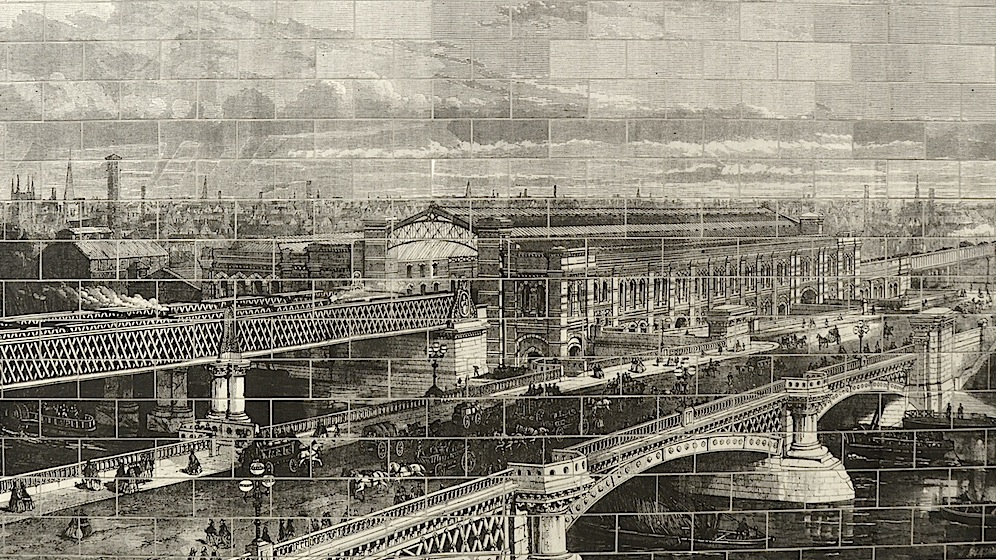
The two Cubitt bridges — the road bridge in the foreground and then beyond it the first Blackfriars Railway Bridge and the Station on the South Bank — as originally pictured in the Illustrated London News, and now illustrated on the wall of the underpass.
Similarly, there were two railway bridges here, this time of course both from the Victorian era. The first was again designed by Joseph Cubitt, here working with F. T. Turner, and it was built 1862-64 in the run-up to the new road bridge, and for many years crossed the river in tandem with it. It was built to carry the London, Chatham and Dover Railway (see Weinreb et al. 72-73). This bridge was taken down in 1984.
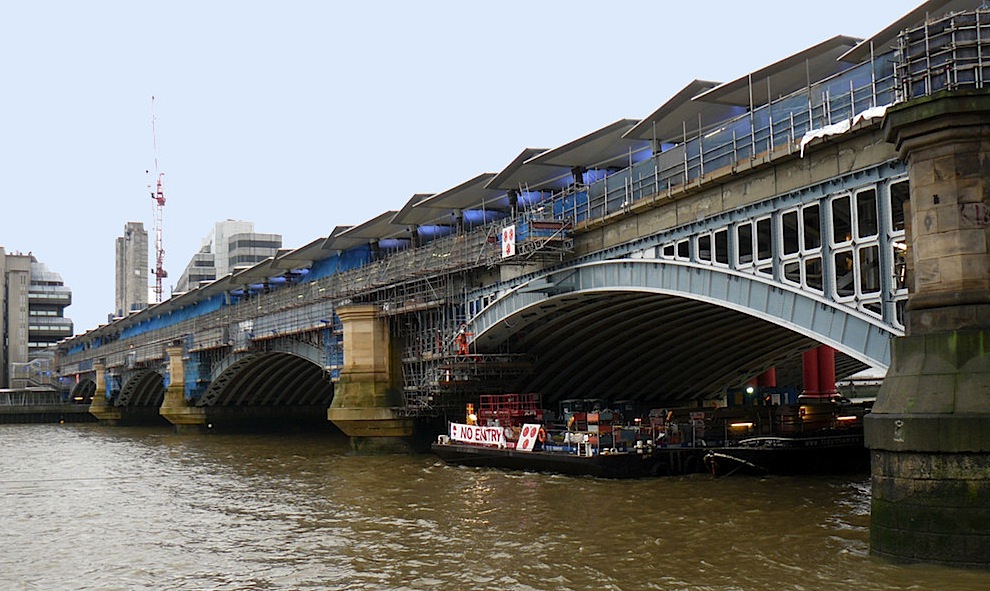
The surviving Blackfriars Railway Bridge, as seen today. Red piers from the older bridge can be glimpsed under the arch on the right.
The only Blackfriars Railway Bridge that we see today is the one designed later in the period by John Wolfe Barry in partnership with Henry Marc Brunel (1842-1903), Isambard Kingdom Brunel's second son. This one was built from 1884-86. It too has five wrought-iron arches faced with cast iron, but since it now has solar panels above it, it looks rather different from the way it looked in the past. This one was originally built to carry the Holborn Viaduct Station Company Railway over the river.
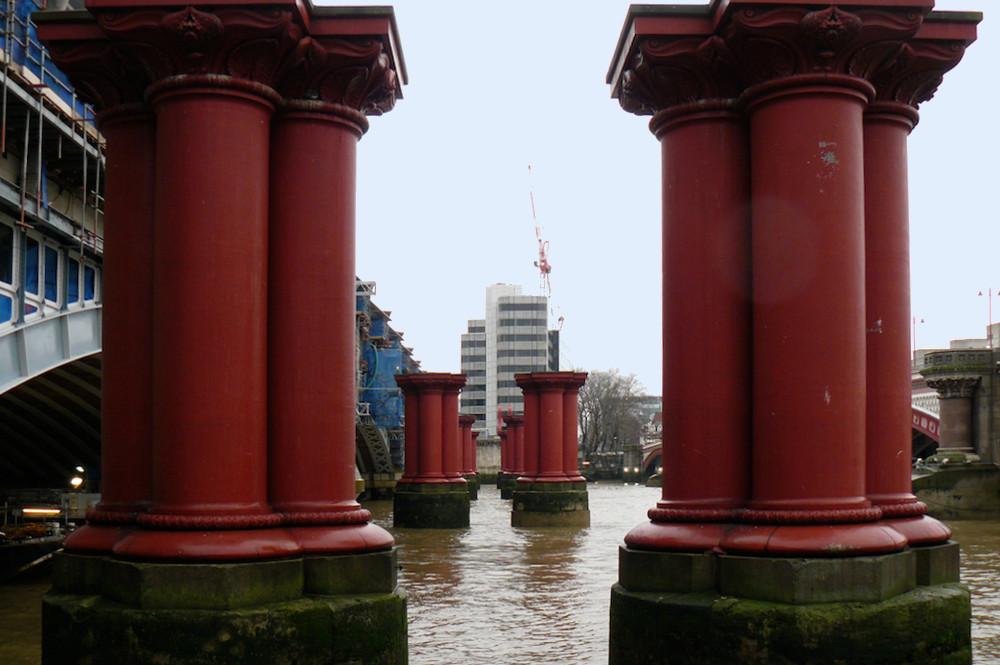
A closer view of the stout piers of the earlier railway bridge, still standing in the water.
First and last two photographs by Colin Price. Close-up of decorative elements, and photographs of the underpass illustrations, by George P. Landow. Commentary and formatting by Jacqueline Banerjee. [You may use the images without prior permission for any scholarly or educational purpose as long as you (1) credit the photographer and (2) link your document to this URL in a web document or to the Victorian Web in a print document.]
Related Material
- The demolition of Mylne's road bridge
- Early postcard of Blackfriars (road) Bridge
- Panoramic view of the road bridge, with St Paul's in the background, shown on the underpass tiling
Sources
"Blackfriars Bridge, 1869." Engineering Timelines. Web. 16 March 2016.
Blackfriars Bridge, EC4." British Listed Buildings. Web. 16 March 2016.
"Blackfriars Bridge and Blackfriars Road." In Survey of London: Volume 22, Bankside (The Parishes of St. Saviour and Christchurch Southwark). Ed. Howard Roberts and Walter H. Godfrey (London, 1950): 115-121. Web. 16 March 2016.
"Obituary. Joseph Cubitt, Vice-President." Minutes of the Proceedings of the Institution of Civil Engineers 39 (1875): 248-51. ICE Virtual Library. Web. 16 March 2016.
Weinreb, Ben, et al. The London Encyclopaedia. 3rd ed. London: Macmillan, 2008.
Created 16 March 2016